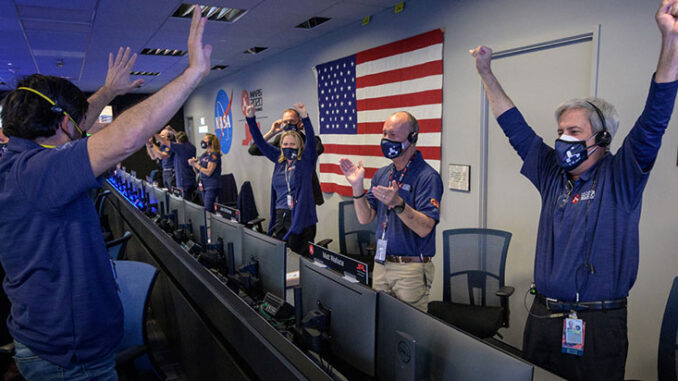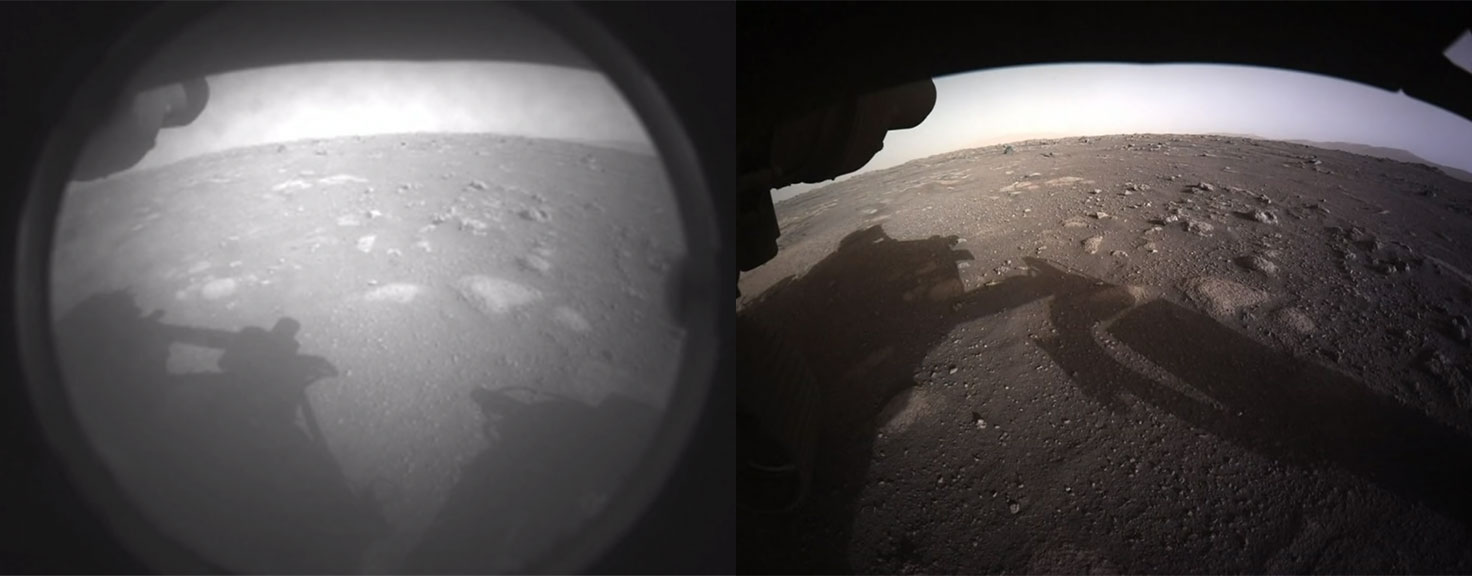
“Touchdown confirmed. Perseverance is safely on the surface of Mars,” said Swati Mohan, an engineer on the Perseverance team.
A successful operation by NASA has placed its newest robot, Perseverance Rover, on the surface of Mars this February 18, 2021 at 4pm standard time. It lifted off from Florida’s Space Coast on top of a United Launch Alliance Atlas V rocket on July 30, 2020.
Try Googling “Perseverance Rover” and you’ll get fireworks celebrating its successful landing!

So, what is the Perseverance Rover?
Perseverance Rover is robot built to do just that, persist—on the atmosphere of Mars. It is the size of a big car, one-ton, and nuclear-powered. All its movements are autonomously timed and sent back to earth. It relayed the photos of its successful landing on Mars via photos from the Mars Reconnaissance Orbiter, which caused celebrations in NASA’s Jet Propulsion Laboratory in California.
It left Earth on July 30, 2020 and took less than a year in Earth’s time to get to Mars. It went on a 300-mile journey from Earth to Mars, with a seven-minute entry, descent, and landing perforating Mar’s thin atmosphere. This is a crucial part of the process, since the entry, descent and landing in those seven-minute can make or break a mission.
It’s often referred to as the “seven-minutes of terror” because in these seven minutes, a launch can fail in less time than it takes to radio back from Mars to Earth. During the end of its cruise phase in space, Jezero Crater was speeding towards Mars at 1,000 miles per hour, much too fast and risking its landing. Once it hit the thin Martian atmosphere, it gradually decreased to from 1,000 miles per hour to 200 miles per hour, with a parachute slowing its descent.
However, with such a heavy machine, a parachute alone would not have been able to deliver the whole robot to Mars. But, since the robot is high-tech and smart, it knew that. So, it went into a sequence of choreographed maneuvers to slow its descent, such as deploying the chute, taking off its hit shield, and then using a sky crane.
As we now know, the perseverance robot landed safely on Jezero Crater, with ease and gentleness on its the entry, descent and landing. With its successful seven-minute landing, this landing would have been captured on video for the first time, and will mostly likely be shown for Curiosity, but as of yet, has not yet been publicized. If everything went to plan, then it will mostly likely be shown with the use of six cameras, an internal microphone in the rover, downloaded and processed data.
What is the Perseverance Robot going to do in Mars?
Its touchdown on Jezero Crater, which was one an ancient lake and delta on the Martian surface, is perfect for the biggest purpose of the robot—which is to hunt for signs of ancient life. It will be the first of NASA’s rovers to have a mission of finding extra-terrestrial life, Martians.
Scientists, using the robot and a Mars Helicopter with high res-cameras and various high-tech tools, will collect data on terrain and signs of life, as well as collect samples to bring back to Earth. The Perseverance Robot will bring these samples back to earth for scientists to analyze. The answer to human life on Mars could very well be trapped inside the Martian objects.

“Our journey has been from following the water to seeing whether this planet was habitable, and finding complex chemicals,” NASA associate administrator Thomas Zurbuchen said in various news sources. “And now we’re at the advent of an entirely new phase.”
What could finding life on Mars do to the inhabitants of Earth? It has always been a feature of science fiction of fantasy to talk about inhabitants in Mars, and yet here we are, talking about the possibility of existing life on Mars. It is now our reality and we may find ourselves rethinking the way we think about Mars. With the data the scientists collect, it will no longer will it be a mystery as to what goes on in Mars, which could open up various possibilities. We humans could in the near future find ourselves residing in Mars with Martians as neighbors.
Perseverance in its Mission
Due to the pandemic, there were risks associated with the perseverance robot. NASA has invested $2.7 billion in the Mars 2020 mission, which has the Perseverance Robot at its heart. The pandemic made the team behind the robot rethink their strategy, their assembly, testing protocols, team member travel, and so on and so forth. And yet, windows only come once every 26 months for Mars missions, so the team was determined to persevere.
That’s why the Perseverance Robot is so aptly named—it has persevered through difficult times. Through the pandemic, through the lift-off, and through the entry, descent, and landing, it has persevered in successful ways. May it continue in its mission to find life in Mars, since we are all excited for what lies ahead once it accomplishes its mission.
